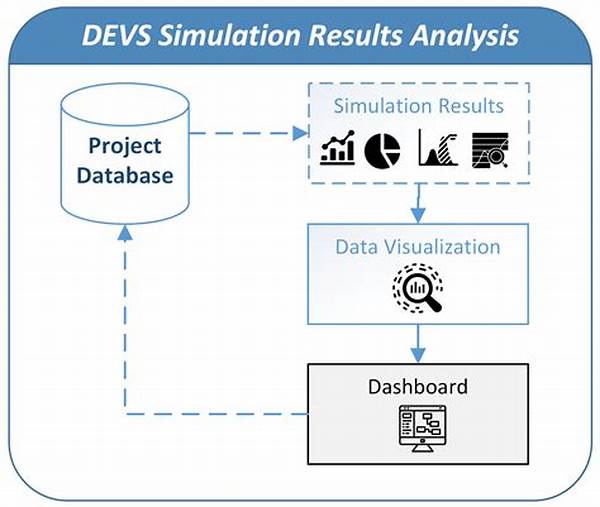Techniques For Analyzing Simulation Results
In the realm of computational sciences and engineering, simulations stand as powerful tools that offer insights into complex systems through virtual experimentation. The vast amount of data generated from these simulations necessitates the implementation of robust techniques for analyzing simulation results to derive meaningful conclusions. In a landscape where nuanced understanding can lead to pioneering advancements, it becomes imperative to adopt and refine these techniques meticulously. Identifying trends, validating models, and ensuring accuracy are just a few elements involved in the intricate process of analysis.
Read Now : Holistic Treatment Options Tucson
Key Approaches to Simulation Analysis
Alright, folks, dive into the world of dissecting simulation results like a pro. You’ve got your data spread out in front of you, begging to be understood. First up, there’s data visualization. This is where you throw your numbers into some snazzy graphs to see patterns and outliers jump out. Then, let’s play with statistical analysis — here’s where you crunch those numbers like a snack to validate what you’re seeing. Next, sensitivity analysis is your BFF for figuring out which variables are playing hardball. You’ll also want to loop in model validation techniques to ensure your sim is as legit as it claims to be. Lastly, comparisons with empirical data help you lock in that real-world connection. These techniques for analyzing simulation results are your toolkit for turning data chaos into crystal-clear insights.
Rev Your Analysis Game
1. Dataset diving: Roll up those sleeves and dig deep into datasets to get to the juicy bits.
2. Graph magic: Make those charts pop to reveal what’s going down.
3. Number crunching: Get cozy with statistical tools to make sense of the chaos.
4. Variable vibes: Scope out which variables are stirrin’ up trouble.
5. Real-world check: Keep it real by linking your findings to empirical data.
These techniques for analyzing simulation results are all about transforming number soup into understandable digits.
Techniques that Hit Different
Yo, when you’re knee-deep in simulation results, it’s time to bring out the secret sauce. Your techniques for analyzing simulation results can make or break your scientific projects. Start with data visualization — think of it as your artistic sidekick, turning raw numbers into eye-candy. Next, get your geek on with statistical analysis, using formulas like no tomorrow. Then, sensitivity analysis is the way to catch those sneaky variables trying to skew your results. Validation is key; no validation, no party. Finally, comparisons with empirical data bring it all home, grounding your findings in the real world.
From smart graphs to rigorous stats, each technique offers a new perspective, a new insight, and, frankly, the chance to look really smart. So, gear up and use these techniques for analyzing simulation results to decode the data mysteries lurking in your simulations.
Best Techniques for Data Wizards
1. Mastering charts: Turn numbers into visually appealing stories.
2. Hardcore stats: Break out the big guns to crunch complex data.
3. Sensitivity spotlight: Identify and control those rogue elements.
4. Validation party: Confirm your model’s swagger with serious checks.
5. Real talk with real-world data: Don’t let it be all virtual. Keep it grounded in reality.
Read Now : Cadillac Ct6 Price Comparison
6. Trend tracking: Keep an eye on those changing patterns.
7. Anomaly alerts: Catch outliers before they become disasters.
8. Model fidelity: Ensure that your models are all about accuracy.
9. Comparative analysis: Stack your data against others to see where you stand.
10. Hypothesis testing: Put your theories to the challenge with solid testing.
These techniques for analyzing simulation results turn chaotic datasets into a brainwave moment.
Techniques Beyond the Basics
Alright, let’s wrap this up. With the scene set on techniques for analyzing simulation results, it’s pretty clear that the journey from raw data to eureka moments is a wild ride. But it doesn’t have to be bumpy. You’ve got the tools now: data visualization gets your sights on patterns effortlessly, while statistical analysis gives you the power to test those patterns with a precision style. Sensitivity analysis keeps it real, highlighting which pieces of data are the real game-changers. Validation is your moment of zen, proving your simulation’s worthiness over and over. And the comparisons with empirical data? That’s your moment to shine, linking your digital discoveries with real-world credibility.
Techniques for analyzing simulation results aren’t just moves in a playbook—they’re the key chapters in your story of discovery. They unlock insights, crack open new views, and help define what’s possible. So there you have it, a turbo-charged toolkit to make your simulation goals a reality, one data point at a time.
Keeping It Real with Data Insights
Why’s everyone so hyped about these techniques for analyzing simulation results? Simply put, they transform abstract figures into concrete findings. Picture yourself as a data detective, armed with visual tools and number-crunching wiles. It’s the difference between squinting at an ocean of numbers and riding the wave of clarity. Visualization isn’t just pretty—it’s functional. And let’s be real, statistical juggling isn’t for the faint-hearted, but it pays off when the trends glow neon bright.
In the end, we’re all just data surfers looking for that perfect set of waves. You keep your board steady with accuracy checks, while validation keeps you grounded. Think of comparative analysis as your mirror, helping you see your work in the wider context. Techniques for analyzing simulation results are the secret weapon in every data geek’s arsenal. They’re the translators, guiding you from raw chaos to pure understanding. Ready to level up your simulation game? The horizon’s the limit.
Wrapping Up the Simulation Station
Now that we’ve waded through the dynamics of techniques for analyzing simulation results, it’s all about putting what you’ve learned to work. Want to know the secret sauce for success? Balance, my friend. With every new simulation, see it as a fresh opportunity—a chance to make sense of the chaos through data visualization, statistical nuance, and a good dose of validation. Treat each technique like a tool in your belt, ready to cut through the noise and zero in on the data gold.
When it’s all said and done, your adventure through techniques for analyzing simulation results will reveal truths, stir up debates, and shine a light on uncharted territories in your field. It’s all about the grind, the hustle, and that flash of brilliance when everything clicks into place. So, with a toolkit loaded with methods and a readiness to bend data to your will, step up and let those simulations speak volumes. This isn’t just number-crunching—it’s a story you’re telling, a new chapter in the book of discovery. Get out there and let the data unfold the narrative.



